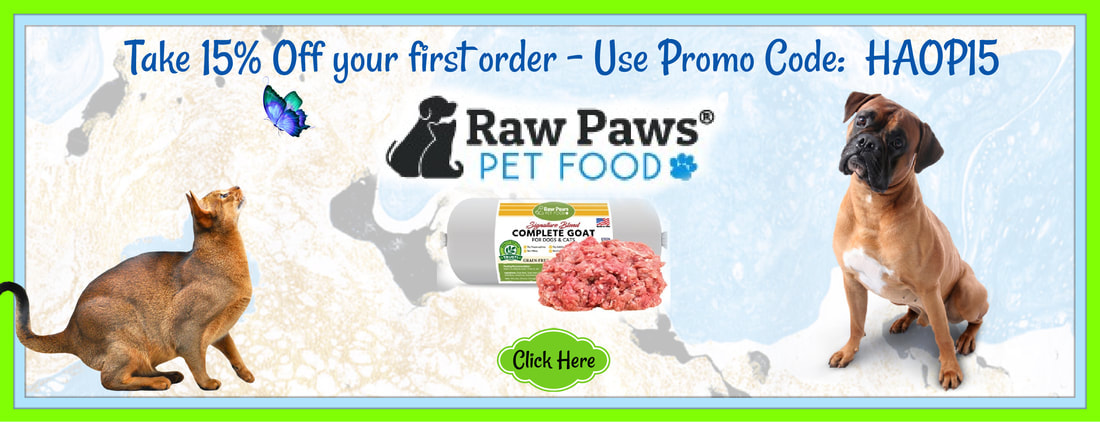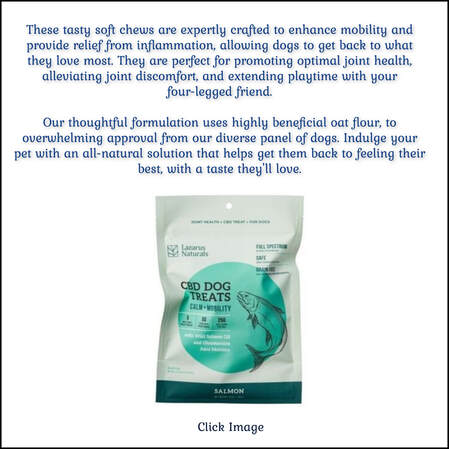
By VCA Hospitals
Ernest Ward, DVM
Emergencies come in all forms; automobile accidents, bite wounds, burns, heatstroke, poisoning, seizures, and more.
For a general overview of what constitutes an emergency, and how to handle common crisis situations, refer to our fact sheet on Canine Emergencies.
What is first aid?
First aid is initial treatment given in a medical emergency. Its purpose is:
Ernest Ward, DVM
Emergencies come in all forms; automobile accidents, bite wounds, burns, heatstroke, poisoning, seizures, and more.
For a general overview of what constitutes an emergency, and how to handle common crisis situations, refer to our fact sheet on Canine Emergencies.
What is first aid?
First aid is initial treatment given in a medical emergency. Its purpose is:
- To preserve life
- To reduce pain and discomfort
- To minimize any risk of permanent disability or disfigurement
In an emergency, what should I do first?
1. Keep calm and assess the scene for any additional threats to you or your pet. This is important for everyone's safety.
2. Keep your dog warm, as quiet as possible, and keep movement to a minimum, especially if there is possible trauma, broken limbs, or any neurological symptoms.
3. Contact your veterinary hospital, inform them of the situation and get specific first aid advice.
1. Keep calm and assess the scene for any additional threats to you or your pet. This is important for everyone's safety.
2. Keep your dog warm, as quiet as possible, and keep movement to a minimum, especially if there is possible trauma, broken limbs, or any neurological symptoms.
3. Contact your veterinary hospital, inform them of the situation and get specific first aid advice.
"The stress of an emergency involving a pet or owner can cause an otherwise friendly animal to act aggressively."
4. To safely move or transport an injured dog, get somebody to help you. For a small dog, put it into its carrier (remove the top for easy and safe access to the carrier; don't push an injured dog through the small door or opening), or use a suitable container such as a strong cardboard box. For a larger dog, use a makeshift stretcher made out of some rigid material such as an appropriate sized, sturdy piece of wood. Carefully maneuver the dog onto a blanket or coat so that it can be gently moved to the carrier, box or stretcher. The blanket will help stabilize the neck and spine, and prevent inadvertent biting or scratching from the injured pet.
5. Get to a veterinary hospital as soon as possible, but drive carefully!
What are some tips on restraining or calming an injured dog?
The majority of injured animals will be panicked and/or disoriented.
5. Get to a veterinary hospital as soon as possible, but drive carefully!
What are some tips on restraining or calming an injured dog?
The majority of injured animals will be panicked and/or disoriented.
The stress of an emergency involving a pet or owner can cause an otherwise friendly animal to act aggressively. Although most panicky dogs will respond to a calm, soothing voice and gentle stroking of the head and shoulders, use caution when approaching or touching any injured animal. It is important to ensure the safety of all rescue personnel that are attempting to assist with an injured animal. Some of the types of restraint that can ensure the safety of both dog and humans include:
Muzzling: You can create a muzzle out of a leash, belt, sock, rope or strap. Loop the cord around the muzzle and tighten it to prevent the animal from biting. Dogs and cats have only one muscle to open their jaw so once the jaw is closed, it is relatively easy to hold it safely shut. Animals can breathe through their nostrils unless the nose is injured or obstructed.
Wrapping: You can wrap the body of a fractious pet in a bag or towel. Be sure to keep the head exposed and not constrict the trachea.
Immobilizing: If you are suspicious of spinal injury, lay the animal on a board and secure it on the board with straps or cords. Pay special attention to immobilizing the head and neck.
What are the signs of shock?
Shock is a complex systemic or whole body reaction to a number of emergency situations. These include severe trauma, hemorrhage or sudden loss of blood, heart failure and other causes of decreased circulation (e.g. severe and sudden allergic reaction and heat stroke). A life-threatening fall in blood pressure is a dangerous part of shock.
"Systemic shock may cause irreversible injury to body cells, and it can be fatal."
If not treated quickly and effectively, systemic shock may cause irreversible injury to body cells, and it can be fatal.
Muzzling: You can create a muzzle out of a leash, belt, sock, rope or strap. Loop the cord around the muzzle and tighten it to prevent the animal from biting. Dogs and cats have only one muscle to open their jaw so once the jaw is closed, it is relatively easy to hold it safely shut. Animals can breathe through their nostrils unless the nose is injured or obstructed.
Wrapping: You can wrap the body of a fractious pet in a bag or towel. Be sure to keep the head exposed and not constrict the trachea.
Immobilizing: If you are suspicious of spinal injury, lay the animal on a board and secure it on the board with straps or cords. Pay special attention to immobilizing the head and neck.
What are the signs of shock?
Shock is a complex systemic or whole body reaction to a number of emergency situations. These include severe trauma, hemorrhage or sudden loss of blood, heart failure and other causes of decreased circulation (e.g. severe and sudden allergic reaction and heat stroke). A life-threatening fall in blood pressure is a dangerous part of shock.
"Systemic shock may cause irreversible injury to body cells, and it can be fatal."
If not treated quickly and effectively, systemic shock may cause irreversible injury to body cells, and it can be fatal.
Clinical signs of systemic shock include rapid breathing and elevated heart rate with pale mucous membranes: gums, lips or under the eyelids. The feet or ears may feel cold and your dog may vomit and shiver. As shock progresses most pets become quiet and unresponsive.
What should I do if my dog is showing signs of shock?
Keep the dog as quiet as possible and try to conserve heat by covering it with blankets, towels, or even newspapers.
Follow the A, B, C's of first aid:
A Airway
B Breathing
C Cardiac function
Airway - Anything that obstructs the airway prevents oxygen entering the lungs. Do your best to clear the mouth and throat of any obstruction such as vomit, saliva or foreign bodies such as grass, sticks or balls. Be careful; your pet may bite you in panic.
"If you are unsure about the health or vaccination status of the injured pet, avoid contact with bodily fluids and blood."
Breathing - If the dog is unconscious and does not appear to be breathing, try gently pumping the chest with the palm of your hand, at the same time feeling just behind the elbow to detect a heartbeat or pulse. If this is unsuccessful, give the pet rescue breathing (see below). Be careful! Injured pets may bite you out of fear. If you are unsure about the health or vaccination status of the injured pet, avoid contact with bodily fluids and blood.
Cardiac function - If you are unable to detect a heartbeat or pulse, or if appears weak and slow, try pressing on the chest with your palm and elevate the lower half of the body to promote blood flow to the brain. Follow the steps below, under CPR.
What should I do if my dog is showing signs of shock?
Keep the dog as quiet as possible and try to conserve heat by covering it with blankets, towels, or even newspapers.
Follow the A, B, C's of first aid:
A Airway
B Breathing
C Cardiac function
Airway - Anything that obstructs the airway prevents oxygen entering the lungs. Do your best to clear the mouth and throat of any obstruction such as vomit, saliva or foreign bodies such as grass, sticks or balls. Be careful; your pet may bite you in panic.
"If you are unsure about the health or vaccination status of the injured pet, avoid contact with bodily fluids and blood."
Breathing - If the dog is unconscious and does not appear to be breathing, try gently pumping the chest with the palm of your hand, at the same time feeling just behind the elbow to detect a heartbeat or pulse. If this is unsuccessful, give the pet rescue breathing (see below). Be careful! Injured pets may bite you out of fear. If you are unsure about the health or vaccination status of the injured pet, avoid contact with bodily fluids and blood.
Cardiac function - If you are unable to detect a heartbeat or pulse, or if appears weak and slow, try pressing on the chest with your palm and elevate the lower half of the body to promote blood flow to the brain. Follow the steps below, under CPR.
How do I perform Rescue Breathing for a dog?
When you encounter an unresponsive dog, the first step is to ensure that there is an open airway.
1. Carefully pull the tongue out of the mouth.
2. Extend the head and neck so that they are in a straight line. DO NOT overextend the neck in animals that have obvious head and neck trauma.
3. Carefully clear the mouth of any debris that may be obstructing breathing.
4. Place a resuscitator mask or your hand over the animal's muzzle while holding the mouth shut and neck extended. For small dogs, you can sometimes improvise with a styrofoam cup or other similar item, by placing the opening over the dog's face and poking a large hole in the bottom for you to breathe through. Ensure a relatively tight seal around the muzzle.
When you encounter an unresponsive dog, the first step is to ensure that there is an open airway.
1. Carefully pull the tongue out of the mouth.
2. Extend the head and neck so that they are in a straight line. DO NOT overextend the neck in animals that have obvious head and neck trauma.
3. Carefully clear the mouth of any debris that may be obstructing breathing.
4. Place a resuscitator mask or your hand over the animal's muzzle while holding the mouth shut and neck extended. For small dogs, you can sometimes improvise with a styrofoam cup or other similar item, by placing the opening over the dog's face and poking a large hole in the bottom for you to breathe through. Ensure a relatively tight seal around the muzzle.
5. Blowing into the nostrils, give 2-3 breaths and watch for a rise in the chest. If you do not see a rise in the chest, reposition the neck or search for airway obstruction.
6. If you believe there is an airway obstruction that you cannot see, turn the dogs upside down, with the back against your chest. Give 5 sharp thrusts to the abdomen to try and expel any object (this maneuver can be difficult to do in large dogs!).
7. For rescue breathing, provide 20 breaths per minute.
8. If the animal fails to breathe on its own, you may attempt an acupressure maneuver. Press firmly with your fingernail or other sharp object in the space just beneath the nose on the upper lip (nasal philtrum). Maintain the pressure for 10-30 seconds.
6. If you believe there is an airway obstruction that you cannot see, turn the dogs upside down, with the back against your chest. Give 5 sharp thrusts to the abdomen to try and expel any object (this maneuver can be difficult to do in large dogs!).
7. For rescue breathing, provide 20 breaths per minute.
8. If the animal fails to breathe on its own, you may attempt an acupressure maneuver. Press firmly with your fingernail or other sharp object in the space just beneath the nose on the upper lip (nasal philtrum). Maintain the pressure for 10-30 seconds.
What if the dog requires CPR?
After you have established an airway and begun rescue breathing, if there are still no obvious signs of life you should attempt cardiac compressions.
1. Make sure there is no major bleeding. If there is bleeding, have an assistant manage the bleeding (see below) while you perform CPR.
2. If possible, lay the dog on its right side.
3. Feel for a heartbeat or femoral pulse. The femoral pulse is located inside the leg in the groin region. Dogs DO NOT have a readily palpable carotid (neck) pulse.
4. Bend the left forearm and note the location where the elbow touches the chest. This is close to the middle of the rib cage.
5. Placing one hand on each side of the chest in the middle of the rib cage, vigorously compress the chest 3-5 times followed by 2 rescue breaths. The rate should be about 3 compressions every 2 seconds.
6. If the dog is small (<20 lbs. or 9 kg.) you can use one hand to compress the chest from both sides by putting your fingers on one side and your thumb on the other side of the chest.
7. Try to compress the chest wall at least 30%. This is ½-1" (1-2 cm) in small dogs and 1½-2" (3-5 cm) in larger dogs.
After you have established an airway and begun rescue breathing, if there are still no obvious signs of life you should attempt cardiac compressions.
1. Make sure there is no major bleeding. If there is bleeding, have an assistant manage the bleeding (see below) while you perform CPR.
2. If possible, lay the dog on its right side.
3. Feel for a heartbeat or femoral pulse. The femoral pulse is located inside the leg in the groin region. Dogs DO NOT have a readily palpable carotid (neck) pulse.
4. Bend the left forearm and note the location where the elbow touches the chest. This is close to the middle of the rib cage.
5. Placing one hand on each side of the chest in the middle of the rib cage, vigorously compress the chest 3-5 times followed by 2 rescue breaths. The rate should be about 3 compressions every 2 seconds.
6. If the dog is small (<20 lbs. or 9 kg.) you can use one hand to compress the chest from both sides by putting your fingers on one side and your thumb on the other side of the chest.
7. Try to compress the chest wall at least 30%. This is ½-1" (1-2 cm) in small dogs and 1½-2" (3-5 cm) in larger dogs.
What is the specific first aid for some of the more common emergencies?
Blood loss
Once you have followed A, B, C above, if the bleeding is still severe, try to stop it. If bleeding is from a cut pad or paw, apply a dressing using a piece of absorbent bandage or clothing. If the bleeding persists and is soaking through the bandage, don't waste any more time, since this is a medical emergency. Most bleeding wounds will require medical or surgical treatment. If the wounds are treated within four (4) hours, they can often be sutured. Deep cuts treated after four hours have increased risk of infection and complication, and require more extensive surgery.
Burns and scalds
Cool the burned area with cold water as quickly as possible. Cover the burned area with damp towels. If the injury is due to a caustic substance, rinse with cold water for fifteen (15) minutes and contact your veterinarian for further advice. Animals that have been exposed to heat or smoke from a fire should be offered water as soon as the situation is stable.
Eye injuries
Injuries to the eye are always very painful and can threaten the eyesight. If a foreign body (grass awn, stick, etc.) can be seen, it may be possible to remove it by gently rinsing the eye with eyewash or contact lens saline solution. Do not allow the dog to rub the eye, either with its paws or against the furniture or carpet. Seek veterinary advice as soon as possible.
Blood loss
Once you have followed A, B, C above, if the bleeding is still severe, try to stop it. If bleeding is from a cut pad or paw, apply a dressing using a piece of absorbent bandage or clothing. If the bleeding persists and is soaking through the bandage, don't waste any more time, since this is a medical emergency. Most bleeding wounds will require medical or surgical treatment. If the wounds are treated within four (4) hours, they can often be sutured. Deep cuts treated after four hours have increased risk of infection and complication, and require more extensive surgery.
Burns and scalds
Cool the burned area with cold water as quickly as possible. Cover the burned area with damp towels. If the injury is due to a caustic substance, rinse with cold water for fifteen (15) minutes and contact your veterinarian for further advice. Animals that have been exposed to heat or smoke from a fire should be offered water as soon as the situation is stable.
Eye injuries
Injuries to the eye are always very painful and can threaten the eyesight. If a foreign body (grass awn, stick, etc.) can be seen, it may be possible to remove it by gently rinsing the eye with eyewash or contact lens saline solution. Do not allow the dog to rub the eye, either with its paws or against the furniture or carpet. Seek veterinary advice as soon as possible.
Seizures
Seizures can be due to many causes. These range from eclampsia (milk fever in a nursing mother) to epilepsy. If due to eclampsia, remove the puppies from the mother immediately. All dogs that are seizing or have had a recent seizure should be kept in a dark, quiet, confined area until medical help can be sought. Contact your veterinarian immediately.
Heat stroke
This most commonly occurs in hot weather when dogs are left in cars without adequate ventilation. Body temperature rises dramatically. Initial clinical signs include excessive panting and obvious distress, but can quickly progress to coma and death. Reduce the pet's body temperature as quickly as possible using cool water and keep the dog wet during transport to the veterinarian. Keep the car windows open. Evaporation will help reduce body temperature. Avoid using ice or ice water because this may drop the temperature too quickly and cause additional complications.
As a final note, after being involved in an emergency or accident, it is important that you take your dog for a veterinary examination as soon as possible, even if it appears to have recovered fully.
This client information sheet is based on material written by: Ernest Ward, DVM.
Seizures can be due to many causes. These range from eclampsia (milk fever in a nursing mother) to epilepsy. If due to eclampsia, remove the puppies from the mother immediately. All dogs that are seizing or have had a recent seizure should be kept in a dark, quiet, confined area until medical help can be sought. Contact your veterinarian immediately.
Heat stroke
This most commonly occurs in hot weather when dogs are left in cars without adequate ventilation. Body temperature rises dramatically. Initial clinical signs include excessive panting and obvious distress, but can quickly progress to coma and death. Reduce the pet's body temperature as quickly as possible using cool water and keep the dog wet during transport to the veterinarian. Keep the car windows open. Evaporation will help reduce body temperature. Avoid using ice or ice water because this may drop the temperature too quickly and cause additional complications.
As a final note, after being involved in an emergency or accident, it is important that you take your dog for a veterinary examination as soon as possible, even if it appears to have recovered fully.
This client information sheet is based on material written by: Ernest Ward, DVM.

